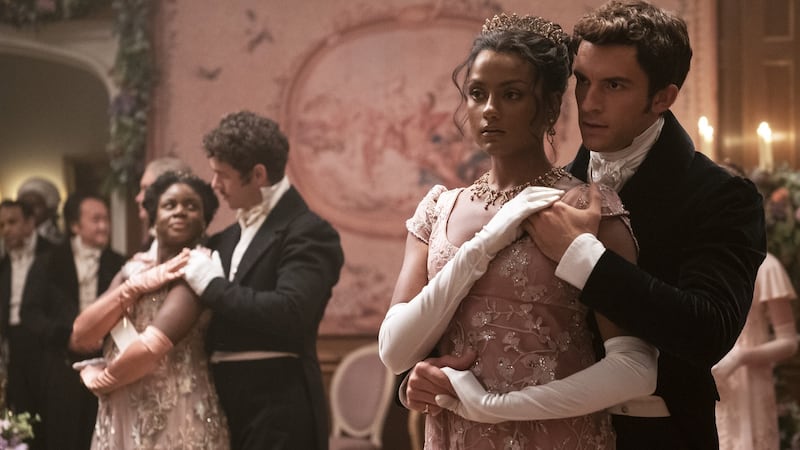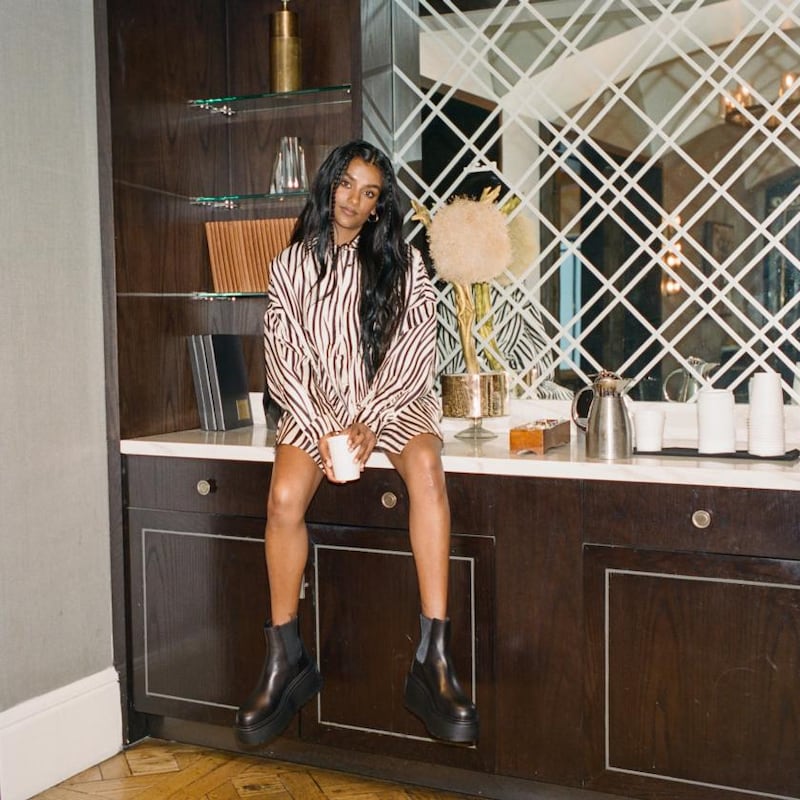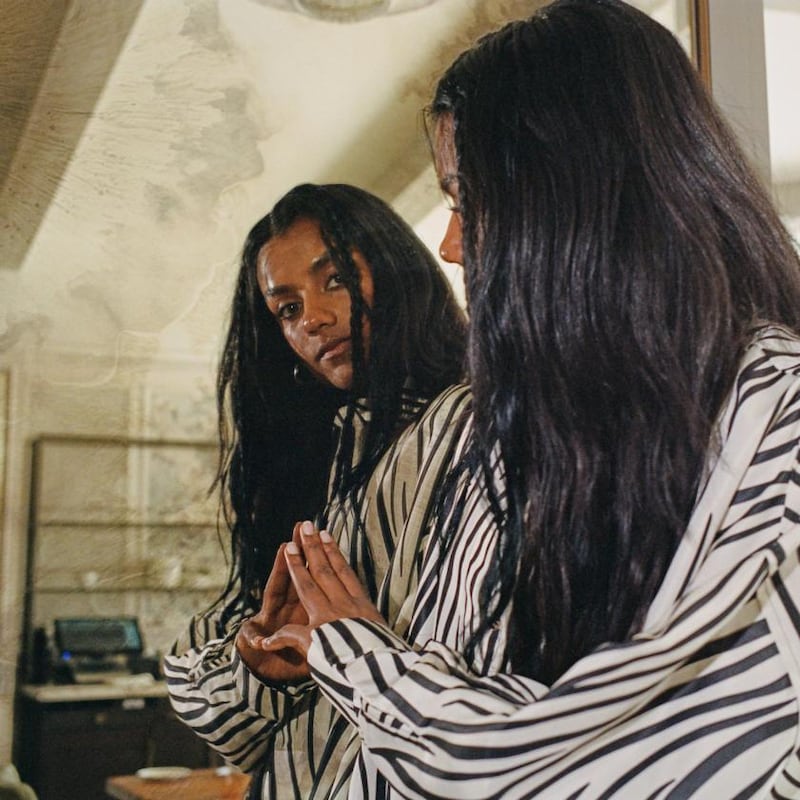Simone Ashley, who plays the fiercely independent Kate Sharma in the new season of Bridgerton, found a lot to relate to in her character – a young woman who doesn't have time for love and who struggles when she's confronted with it.
“I’m still on that same journey, learning that balance between being serious and brave and headstrong and heartstrong, but also sharing space and relating to people and letting people in,” says 27-year-old Ashley.
Season 2, which arrived on Netflix in late March, centers on Kate and her little sister, Edwina (Charithra Chandran), who have travelled with their mother from India to find a husband for the younger Sharma daughter. But Kate ends up developing feelings for Anthony Bridgerton (Jonathan Bailey), the viscount who has been courting Edwina, and tries her best to deny those emotions.
Although this season contains notably fewer steamy scenes than the first, it still serves up plenty of juicy gossip, extravagant style and instrumental pop covers, as well as several nods to South Asian culture.

Ashley, who grew up in England, had a breakout role in Sex Education, a Netflix comedy that follows the lives of high school students, but Bridgerton is her first time playing a lead character in a major production. In a video interview last week, Ashley spoke about establishing chemistry with her co-star and the importance of representation on screen. This conversation has been condensed and edited.
Q Which were your favorite scenes from this season of "Bridgerton"?
A I love the scene where Kate and Anthony dance for the first time. And the bee-sting scene – I think that's such a pivot in the story. The stakes are really raised, and they realise they have feelings for one another and that there's this obstacle now between everything that they've worked for. And, I love all the horse-riding scenes.
Q What was the most awkward scene to shoot?
A There were never any awkward moments. Uncomfortable, maybe. With the mud scene, we were just covered in mud all day long, but we got really accustomed to it by the second take. I try not to ever indulge in thoughts of feeling awkward or uncomfortable. I just tried to get on with it and find the positives and see it as a challenge and have fun with it so that I can leave and know that I did my best.
Q As a viewer, the chemistry between Kate and Anthony was palpable. What was it like when you first met Jonathan Bailey?
A We met for our chemistry read, and it was so bizarre. We sat on a sofa, and we did three scenes. I think we did the horse-riding scene where Kate and Anthony first meet, the library scene and, God, I can't remember the last one. We just clicked.

Q What were the intimacy coordinators like?
A We worked with Lizzy Talbot, who was an amazing intimacy coordinator. She really encouraged us to portray what it is like for a woman to be empowered and to communicate that sense of knowing what she wants. And I loved that about Kate – she's always been a woman who's very self-realised, and I think she is incredibly sexy in that sense. She has a sense of spirit within her that Anthony is so entranced by, and it's such a safe space for her to share that with him and to have fun with it and to receive pleasure herself. I found it incredibly empowering, as a woman of colour especially. I'm so proud of my body, and I love my body. I'm grateful that it's healthy and that it's strong enough for me to get up every day and do the things that I need to do.
Q What were the great romance books or films that influenced how you view love?
A I grew up watching a lot of Disney classics, a lot of classical movies and a lot of musicals. I think we all just love to see humans overcome whatever it is in life that gets in the way of them following their heart.
Q Which heroines did you look up to?
A There was something about Uma Thurman's character in Kill Bill that I didn't completely understand but was entranced by. She was a woman that was so focused on her objective, and that was to get her baby and to kind of get revenge as well, but we won't dive into that. I thought she was so serious and overcame anything, physically or mentally. And I remember being a kid and watching that – being really inspired by her.
Q Women of colour online have spoken about how much it means for them to see you, a dark-skinned Indian woman, starring in such a widely watched Netflix show. What does that mean to you?
A I'm so grateful and wonderfully overwhelmed by the response that we've received. I'm very proud of my heritage, and I'm proud that there are any effects that I've had, just me doing my job, especially if they're positive, and uplifting other women and making them feel seen.

Q The conversation surrounding race in Bridgerton seems to have two sides. Some say it has done wonders for representation, while others argue that colourblind casting isn't used to make a bigger point in the series. How do you view representation in the series?
A It's 100 per cent colour-conscious casting, and not colourblind. We are acknowledging the fact that these characters are Indian and they are women of colour, but it's so beautifully done because when the Sharmas arrive, they fit in so seamlessly. It isn't on the nose that they're from India. And it's celebrated in so many different ways. We certainly haven't been brought to this series as two Tamil women for that to be completely ignored. It's celebrated completely in everything from the costumes to the makeup to the storyline to the scenes.
Q Many South Asian viewers loved the show's nods to Indian culture, including the conversations about chai, the fabric the Sharmas' dresses were made out of and the inclusion of Kabhi Khushi Kabhie Gham in the soundtrack. Did any of these moments, in particular, stand out to you?
A I love the scene where Kate is applying coconut oil to Edwina's hair. That scene is such a shift in the storyline where you see Edwina's frustration and determination to become the viscountess. That's where Kate starts to lose control, and Edwina starts to take the reins of this plan. Everything changes in that moment, but then at the same time, it so happens to be a scene where Kate's applying coconut oil to Edwina's hair. I'm sure women from so many different heritages resonate with it. It's such an intimate bonding moment between two women – two sisters – that I think a lot of women can relate to. – This article originally appeared in The New York Times










